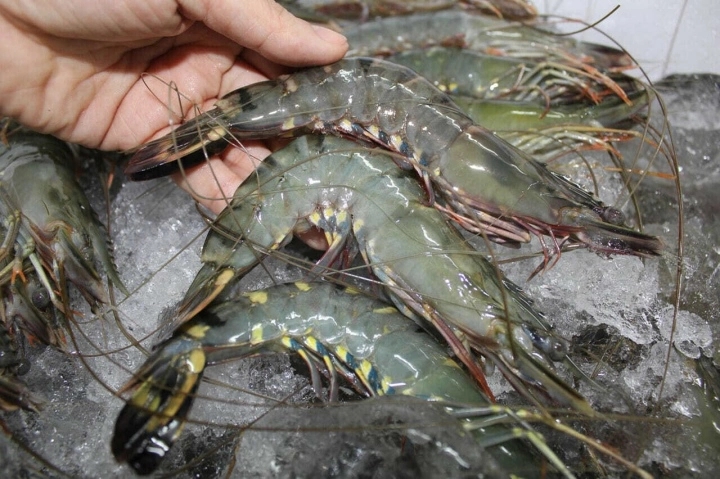Shrimp is a nutritious and delicious food that is often preferred by housewives for daily meals and special occasions. However, the dish is only tasty when you choose fresh, clean shrimp. Otherwise, it can threaten the health of the person eating it. So how do you recognize shrimp that does not meet quality standards?
Absolutely do not buy shrimp if they have the following signs:
Here are the signs that indicate that shrimp is not fresh and safe, and it is best to stay away from them.
Soft shell, sticky, and strong fishy smell
If you see that the shrimp is sticky and sticking together when you lift it up, do not buy it at all. To check more accurately, you should use your finger to press on the shell and move your finger a few times from front to back. If the shell is firm to the touch, the shrimp is still fresh. However, if the shrimp is not fresh, the shell will feel soft, sticky, and have a strong fishy smell. Absolutely do not buy shrimp if they have these signs.
In addition, do not choose shrimp that has already been peeled because they are often frozen for a long time and no longer fresh.
Shrimp with spread tails
Check the shrimp tails to determine their freshness.
Shrimp injected with impurities often have spread tails, while clean shrimp usually have their tails tucked down. Shrimp injected with impurities often appear fat and abnormally swollen, to the point where the segments on the shrimp’s body are almost stretched out, especially the joint between the head and body.
Shrimp injected with impurities will release a lot of water when cooked, the flesh of the shrimp will shrink, and the meat will taste less fresh than usual.
If the shrimp has been injected with gelatin, when fully cooked, peeling off the shell will easily reveal a layer of gelatin between the meat and the shell, especially at the head and below the legs.

Absolutely do not buy shrimp if they have these signs: unusual colors, spread tails, soft shell, sticky, and strong fishy smell.
Unusual color of shrimp
Normally, fresh and good shrimp will have shells that are white and green in color with a certain shine. Especially when viewed under the sunlight, you still feel that the shrimp’s shell is transparent and shiny. Conversely, shrimp that has been left for a long time will have shells that turn yellowish or pale, so it is not advisable to buy them.
If you see shrimp that is black and not shiny, it means that the shrimp has deteriorated, and if the shrimp’s whiskers are black, it is not fresh.
Malformed body and head of shrimp
Healthy live shrimp will have a slightly curved body and firm meat. Spoiled or frozen shrimp will often bend their bodies into a circular shape instead of having a straight shape or a slightly curved shape like live shrimp.
The area between the body and the head of shrimp is prone to turning black. If the connection between them is black, broken, and the shrimp’s head is about to fall off, it means that the shrimp is no longer fresh. Absolutely do not buy shrimp if they have these signs.
You should also pay attention to choosing shrimp with flexible and intact shells, with the head firmly attached to the body, ensuring that the shrimp will always be fresh.
Pay attention to the legs of shrimp
Fresh and delicious shrimp have legs tightly attached to the body, and the shrimp meat must be firm. Note that you should not choose shrimp with legs that have turned black because this is a sign that they are no longer fresh.
Tips for choosing different types of shrimp
To choose fresh tiger shrimp, you should buy shrimp that are still alive, active, with a pinkish-white body and legs firmly attached to the body. Pink tiger shrimp that has been preserved for a long time will become slimy, lose quality significantly. Absolutely do not buy shrimp if they have these signs.
How to choose freshwater shrimp
When choosing freshwater shrimp, you should buy shrimp that are still alive, jumping, with a pink-white body and green eyes.
Do not choose freshwater shrimp that have died, and have shells that turn dark pink.
How to choose prawns
You should buy prawns that are still alive and have legs tightly attached to the body. Shrimp with shiny, smooth shells, fresh and transparent meat color are delicious and firm shrimp.
Tips for choosing lobster
According to vtc.vn



































